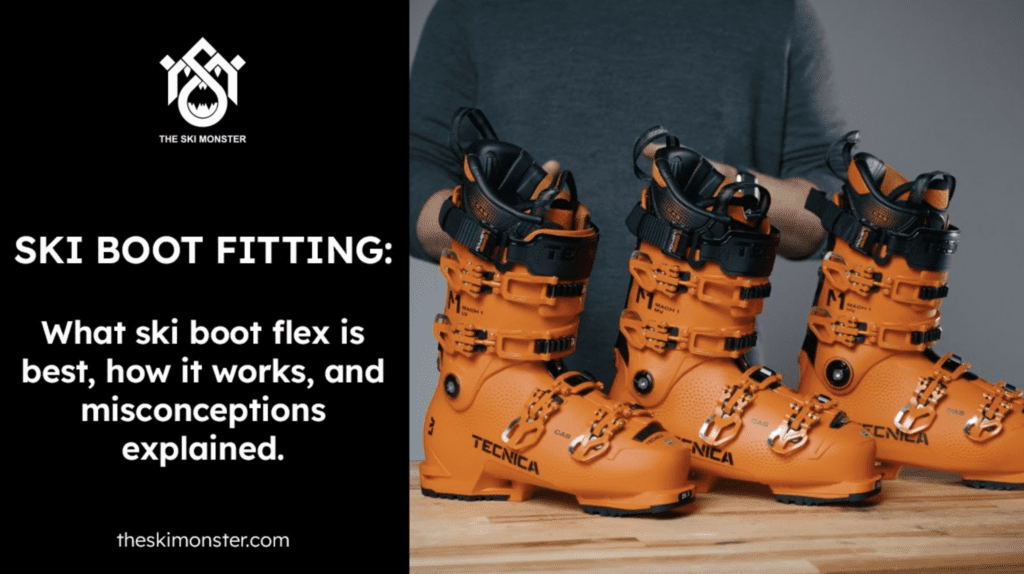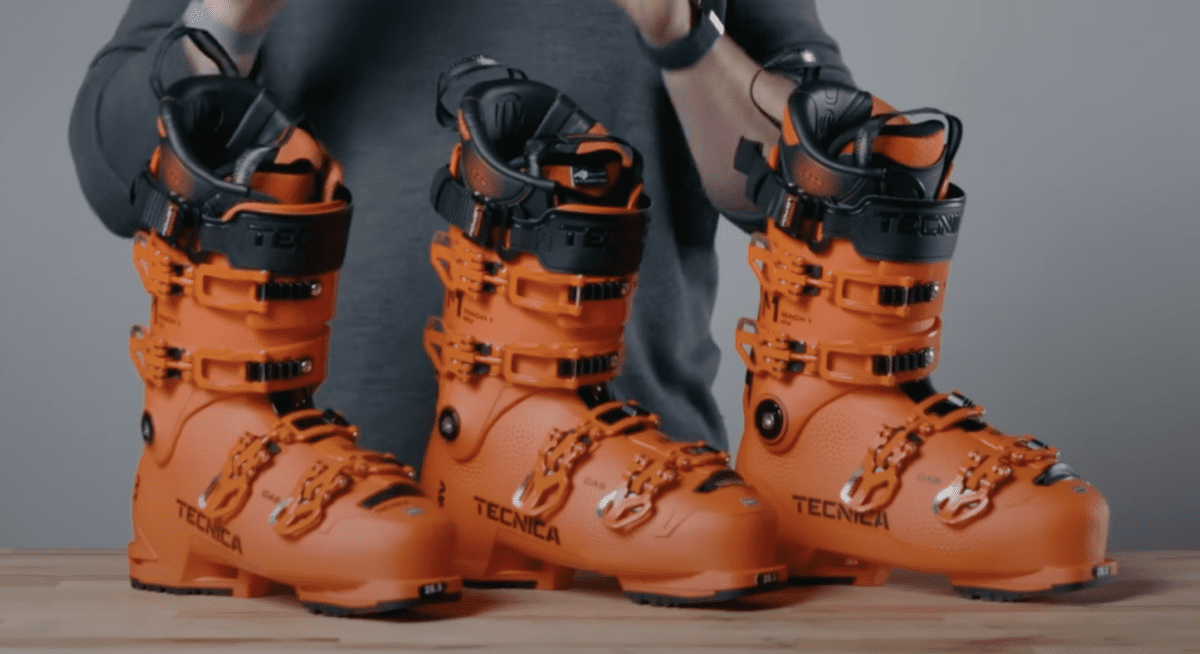
Boot fitting is… complicated. There are a ton of different factors that might make a boot right for one person and entirely wrong for another. Instep volume, width, shell shape, size (obviously), and features can all play a role in finding the right boot. Ski boot stiffness, however, seems to be the most misunderstood factor in boot fitting.
I’ll let this video from The Ski Monster do most of the explanation, since it covers most of the topic pretty well. One of the more important things to focus on is that boot stiffness is not standardized by any means. A boot rated at 130 from one company could easily be equal to a boot rated at 100 by another company. The important thing to note is where the boot sits among the same line. If it’s the stiffest of its kind, then it’s probably a pretty stiff boot. If it’s the softest of its kind, than it’s probably fairly soft.
Also, as a disclaimer before getting into the video, his description makes it sounds like you should be in the stiffest boot option you can afford. Yes, you probably want to be in the stiffest boot you can handle, you need to make sure you can actually flex the boot. If you’re unable to flex a wicked stiff boot, but you still gravitate towards that option, you’re not going to have a very fun time. He seems to kind of imply that stiffness is all marketing, but I don’t think that’s really true.
Your main takeaway through this will hopefully be that you need to find a proper boot fitter to actually assess your feet, ski setup, and ski ability to determine the right boot for you. Shopping online for the best deal can be a blast, but with something as important as ski boots, it’s almost always best to talk to someone who knows more than you.
Related: Obermeyer’s Mer De Glace Sunglasses: A Skiers Choice
Image Credit: The Ski Monster via YouTube

